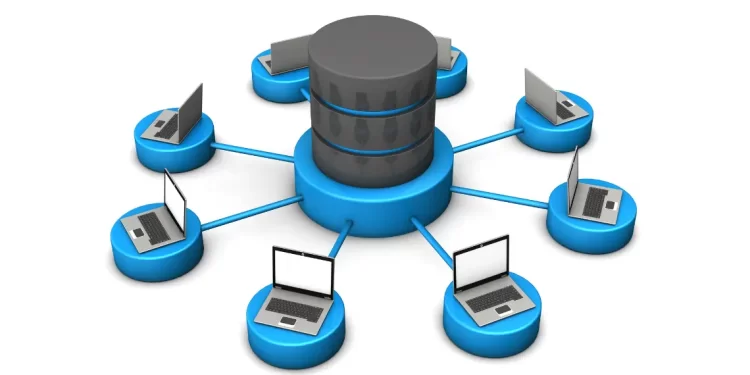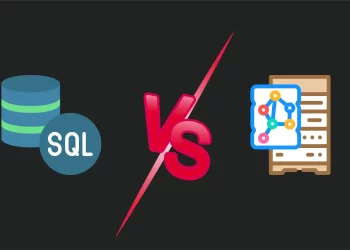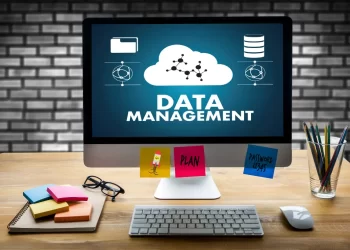Today, most of the applications are heavily database-oriented. The choice of a database can significantly impact the success of our project.
Choosing the right database for our needs is crucial for a small application or an extensive enterprise system.
We will explore the key characteristics, benefits, and ideal use cases for MySQL, PostgreSQL, SQLite, NoSQL, and MSSQL, which will help you choose the right database for your applications.
Table of Contents
1. MySQL
MySQL is an open-source relational database management system (RDBMS) that uses Structured Query Language (SQL). It’s widely used for web applications and has been the database of choice for many years for various applications.
Why Use MySQL?
- Performance: MySQL’s fast-read operations make it ideal for applications with heavy read workloads.
- Ease of Use: Setting it up is relatively simple, and many web hosting services support it.
- Community Support: One of the oldest and most popular databases, MySQL has extensive documentation and a large user community.
When to Use MySQL?
- When building web applications with a high read-to-write ratio.
- For projects that require quick setup and straightforward management.
- When budget constraints necessitate the use of an open-source solution with widespread support.
2. PostgreSQL
PostgreSQL is an advanced, open-source RDBMS known for its robustness, scalability, and support for advanced SQL features. It also supports NoSQL features, such as JSON storage and indexing.
Why Use PostgreSQL?
- Advanced Features: It supports complex queries, full-text search, and custom data types.
- Reliability: Known for its stability and data integrity features.
- Extensibility: It allows the creation of custom functions, data types, and operators.
When to Use PostgreSQL?
- For applications requiring complex queries and data integrity.
- When you need to handle a large volume of transactions.
- When building systems that need advanced data types or NoSQL capabilities.
3. SQLite
SQLite is a self-contained, serverless, zero-configuration, transactional SQL database engine widely used in embedded systems and mobile applications.
Why Use SQLite?
- Lightweight: Requires minimal setup and has a small footprint.
- Serverless: Operates as a standalone library, which simplifies deployment.
- Portable: You can quickly transfer database files between systems.
When to Use SQLite?
- For mobile applications or small desktop applications.
- For testing and development environments.
- When you need a simple, low-overhead database without the complexity of a server.
4. NoSQL
NoSQL databases are a category of databases designed to handle a wide variety of data models, including document, key-value, wide-column, and graph formats. Examples include MongoDB, Cassandra, and Redis.
Why Use NoSQL?
- Scalability: Designed to scale horizontally, they are ideal for large-scale applications.
- Flexibility: Schemaless design allows for easy handling of unstructured data.
- Performance: Optimized for specific use cases like high-speed key-value stores or document storage.
When to Use NoSQL?
- For big data applications requiring high throughput and low latency.
- When working with unstructured or semi-structured data.
- For use cases like real-time analytics, IoT, or content management systems.
5. MSSQL (Microsoft SQL Server)
MSSQL is a relational database management system developed by Microsoft. It offers many features, including structured, semi-structured, and spatial data support.
Why Use MSSQL?
- Integration with Microsoft Products: Seamlessly integrates with other Microsoft tools and services.
- Enterprise Features: Advanced security, high availability, and comprehensive management tools.
- Performance: Optimized for high performance in enterprise environments.
When to Use MSSQL?
- For enterprise-level applications with stringent security and performance requirements.
- When your project integrates with Microsoft tools like Azure, .NET, or Active Directory.
- When you need robust support and comprehensive management tools.
6. Oracle Database
Oracle Database is a multi-model RDBMS produced and marketed by Oracle Corporation. It is widely used in large-scale enterprise applications.
Why Use Oracle Database?
- High Performance: Optimized for high transaction processing and large-scale data warehouses.
- Advanced Features: Extensive support for advanced SQL features, PL/SQL programming, and analytics.
- Enterprise-Level Security: Provides robust security features to protect sensitive data.
When to Use Oracle Database?
- For large enterprises requiring high reliability and performance.
- When dealing with extensive transaction processing or large-scale data warehousing.
- When advanced security and compliance features are critical.
7. MongoDB
MongoDB is a popular NoSQL database that uses a document-oriented data model. It stores data in flexible, JSON-like documents.
Why Use MongoDB?
- Flexibility: Schemaless design allows for easy modification of the data structure.
- Scalability: Designed for horizontal scalability, making it suitable for handling large amounts of data.
- Developer-Friendly: Offers a rich query language and aggregation framework.
When to Use MongoDB?
- For applications requiring flexible schema and rapid iteration.
- When dealing with large volumes of unstructured or semi-structured data.
- For real-time analytics, content management, and IoT applications.
8. MariaDB
MariaDB is an open-source RDBMS that originated as a fork of MySQL. It aims to maintain compatibility with MySQL while offering additional features.
Why Use MariaDB?
- Performance: Includes enhancements for better performance and scalability.
- Open Source: Completely open source with an active development community.
- Compatibility: Maintains compatibility with MySQL, making migration easy.
When to Use MariaDB?
- As an alternative to MySQL for web applications.
- For projects requiring open-source solutions with active community support.
- When seeking improvements in performance and additional features over MySQL.
9. Redis
Redis is an open-source, in-memory key-value data store known for its speed and performance. It supports various data structures like strings, lists, sets, and hashes.
Why Use Redis?
- Performance: Extremely fast because of its in-memory nature.
- Versatility: Supports various data structures and advanced features like pub/sub messaging.
- Simplicity: Simple to set up and use for caching, session management, and real-time analytics.
When to Use Redis?
- For caching to improve the performance of web applications.
- For real-time analytics and data processing.
- When you need fast, in-memory data storage for session management or messaging.
10. Cassandra
Cassandra is a highly scalable, distributed NoSQL database designed to handle large amounts of data across many commodity servers without a single point of failure.
Why Use Cassandra?
- Scalability: Designed for massive scalability and high availability.
- Performance: Optimized for high write throughput and low latency.
- Resilience: Fault-tolerant with no single point of failure.
When to Use Cassandra?
- For large-scale data applications requiring high write throughput.
- When building applications that need to be distributed across multiple data centers.
- For real-time big data analytics and IoT applications.
11. Neo4j
Neo4j is a graph database that represents and stores data using graph structures with nodes, edges, and properties.
Why Use Neo4j?
- Graph-Based: Ideal for applications that require graph data models.
- Performance: Optimized for traversing and querying graph structures.
- Flexibility: Supports ACID transactions and flexible schema design.
When to Use Neo4j?
- For applications involving social networks, recommendation engines, and fraud detection.
- When you need to model and query complex relationships between data.
- For real-time insights from interconnected data.
12. CouchDB
CouchDB is a NoSQL database that stores data in JSON and uses JavaScript as the query language. It prioritizes easy replication and availability for distributed databases.
Why Use CouchDB?
- Replication: Easy and efficient replication for distributed applications.
- Scalability: Can handle large amounts of data across many servers.
- Flexibility: Schema-free design and JSON storage.
When to Use CouchDB?
- For applications requiring offline-first capabilities with eventual consistency.
- When you need easy replication and synchronization of data across multiple devices.
- For web and mobile applications that need flexible schemaless data storage.
13. Firebase Realtime Database
Firebase Realtime Database is a cloud-hosted NoSQL database that allows data to be stored and synchronized in real-time across all clients.
Why Use Firebase Realtime Database?
- Real-Time Synchronization: Synchronize data automatically in real-time across all connected clients.
- Scalability: Designed to handle real-time data and scale seamlessly.
- Integration: Excellent integration with other Firebase services, making it ideal for mobile and web apps.
When to Use Firebase Realtime Database?
- For real-time applications like chat apps, live collaboration tools, and multiplayer games.
- When building mobile and web applications that require real-time data updates.
- For projects that already use other Firebase services.
14. Amazon DynamoDB
Amazon DynamoDB is a fully managed NoSQL database service provided by Amazon Web Services (AWS) that offers high performance at any scale.
Why Use Amazon DynamoDB?
- Scalability: Automatically scales designed to handle traffic and storage requirements.
- Performance: Provides low latency and high throughput for real-time applications.
- Managed Service: Fully managed by AWS, reducing the overhead of database management.
When to Use Amazon DynamoDB?
- For applications that require high throughput and low latency.
- When you need a managed NoSQL solution with seamless integration into the AWS ecosystem.
- For use cases such as real-time bidding, gaming, IoT, and e-commerce.
15. IBM Db2
IBM Db2 is a family of data management products, including database servers, developed by IBM. Db2 stores analyzes, and retrieves data efficiently.
Why Use IBM Db2?
- Performance: Known for high performance and reliability in handling complex queries.
- Analytics: Strong support for advanced analytics and machine learning.
- Integration: Seamlessly integrates with other IBM products and services.
When to Use IBM Db2?
- For enterprise applications requiring high performance and robust data management.
- When your project needs advanced analytics capabilities.
- When using other IBM products and services.
16. HBase
HBase is an open-source, distributed, scalable big data store that runs on top of the Hadoop Distributed File System (HDFS). It allows for real-time read/write access to large datasets because of its design.
Why Use HBase?
- Scalability: Can handle massive datasets across many servers.
- Integration: Integrates well with the Hadoop ecosystem for big data processing.
- Real-Time Access: Supports real-time read/write operations on large datasets.
When to Use HBase?
- For big data applications requiring real-time read/write access.
- When you need to store and process large amounts of unstructured data.
- For use cases like time-series data analysis, log data storage, and large-scale data warehousing.
17. CockroachDB
CockroachDB is a distributed SQL database designed for cloud applications. It provides strong consistency, horizontal scalability, and high availability.
Why Use CockroachDB?
- Scalability: Horizontally scalable, designed to handle distributed systems.
- Consistency: Ensures strong consistency and supports ACID transactions.
- Resilience: Built to survive hardware failures with minimal disruption.
When to Use CockroachDB?
- For cloud-native applications requiring high availability and fault tolerance.
- When you need a distributed database with solid consistency.
- For applications requiring seamless horizontal scalability.
18. ArangoDB
ArangoDB is a multi-model database that supports document, key-value, and graph data models with a unified query language.
Why Use ArangoDB?
- Multi-Model: Supports multiple data models, providing flexibility in handling different data.
- Performance: Optimized for performance with features like indexing and caching.
- Unified Query Language: Uses AQL (ArangoDB Query Language), which allows querying across different data models.
When to Use ArangoDB?
- For applications that need to handle multiple types of data models (document, key-value, graph).
- When you want a single database solution for diverse data needs.
- For use cases such as knowledge graphs, recommendation engines, and complex data relationships.
Comparative Summary Table for Choosing the Right Database
| Database | Type | Strengths | Ideal Use Cases |
|---|---|---|---|
| MySQL | RDBMS | Fast reads, ease of use, community support | Web applications, read-heavy apps |
| PostgreSQL | RDBMS | Advanced features, reliability, extensibility | Complex queries, data integrity |
| SQLite | RDBMS | Lightweight, serverless, portable | Mobile apps, small desktop apps |
| MSSQL | RDBMS | Integration with Microsoft products, performance | Enterprise applications |
| Oracle Database | RDBMS | High performance, advanced features, security | Large enterprises, data warehouses |
| MongoDB | NoSQL | Flexibility, scalability, developer-friendly | Real-time analytics, CMS, IoT |
| Cassandra | NoSQL | Scalability, performance, fault tolerance | High write throughput, distributed apps |
| Redis | NoSQL | Speed, in-memory, versatile data structures | Caching, real-time analytics |
| CouchDB | NoSQL | Replication, scalability, flexibility | Offline-first apps, distributed systems |
| Firebase Realtime | NoSQL | Real-time synchronization, scalability | Real-time apps, mobile/web apps |
| DynamoDB | NoSQL | Managed service, performance, scalability | High throughput, low latency apps |
| CockroachDB | SQL | Scalability, consistency, resilience | Cloud-native apps, high availability |
| ArangoDB | Multi-Model | Flexibility, performance, unified query language | Knowledge graphs, recommendation engines |
| IBM Db2 | RDBMS | Performance, analytics, integration | Enterprise apps, advanced analytics |
| HBase | NoSQL | Scalability, real-time access | Big data, time-series data |
| Neo4j | Graph | Graph-based, performance, flexibility | Social networks, fraud detection |
Conclusion
It’s critical to make the right database decision because it’s our project’s specific needs, including performance, scalability, and data structure requirements.
If we understand the strengths and ideal use cases for each database type, we can choose the right database that will support the long-term success of our application.
Consider future growth and scalability needs, and leverage multiple databases if your project demands it.
🚀 Before You Go:
- 👏 Found this guide helpful? Give it a like!
- 💬 Got thoughts? Share your insights!
- 📤 Know someone who needs this? Share the post!
- 🌟 Your support keeps us going!
💻 Level up with the latest tech trends, tutorials, and tips - Straight to your inbox – no fluff, just value!
















I enjoy your piece of work, regards for all the interesting posts.